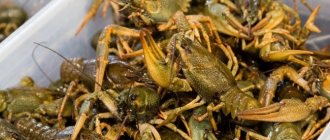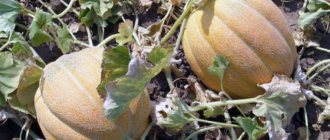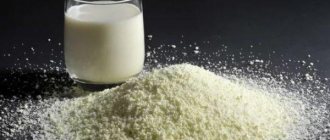Dried apricots are dried fruits. It is made from apricot and is widely used for preparing various desserts, cereals, salads and even meat dishes. To prepare 1 kg. dried apricots will require 4 kg. fresh apricots, but despite this, many prefer to store apricots in this form because of the benefits of this product, rather than canning them. Dried fruit contains vitamins and microelements necessary for the human body, and is superior to most products in terms of the amount of minerals and fiber. It is not surprising that many people try to include such a product in their morning diet more often. Questions related to the consumption of dried apricots concern not only their benefits and calorie content; many are interested in the period and storage conditions of dried apricots. How to store dried apricots will be discussed today in this article.
General storage recommendations
Dried apricots (has many names, such as kaisa, apricot, etc.) even after it is dried, contain a lot of water. If you buy it at the market or supermarket, you will notice that it is not too dry, but rather wilted. Manufacturers believe that in this condition it has more weight and better presentation. But storing such a product is also more difficult.
Dried apricots should be stored in a dark, well-ventilated place with little humidity. The room temperature should not exceed +15°C - +20°C, and air humidity should be kept at 30-40%. In such conditions, you can save this dried fruit for up to 1.5 years.
Medical indications/contraindications
Dried apricots are an excellent antioxidant and have a general strengthening effect. Doctors advise including dried apricots in your diet after a stroke or heart attack.
The dietary fiber contained in dried apricots helps relieve constipation and helps cleanse the intestines.
Dried apricot fruit is believed to lower cholesterol levels. They are used as an antitumor agent in the treatment of cancer.
This dried fruit also has a diuretic effect.
It is important to know: this type of dried fruit is useful, but not for everyone. The amount of fruit eaten should be limited to those people who have certain diseases. Dried apricots have medical contraindications: for example, for stomach ulcers and other diseases of the duodenum.
It is recommended to include it with caution in your diet for those suffering from diabetes and thyroid diseases.
Relatively side effects include the ability of dried apricots to cause flatulence, especially if consumed in large quantities. The optimal norm is 4-5 berries per meal.
Treatment before storage
The natural appearance of dried apricot is not very attractive. It has a brownish color and a wrinkled matte surface. As for manufacturers, they give dried apricots a marketable appearance and increase their shelf life with the help of various treatments and preservatives.
To make dried apricots look more presentable and be stored for a long time, in industrial conditions they are treated with sulfur dioxide (E220 on the packaging). It is this additive that allows you to give it a bright orange color that attracts buyers so much.
Some manufacturers hold dried apricots over gasoline vapor to preserve their color. It is clear that such a product will have a specific smell. The dried fruit is also soaked in dyes and glycerin to add brightness and shine.
Of course, apricots dried on their own contain more useful substances than those that have been processed. But they are more susceptible to moisture and destruction by insects if dried apricots are stored without following the rules.
Individual approach
In addition to following the basic rules, the housewife or owner must take into account the type of fruit they are preparing for the winter. In this matter, an individual approach is especially important. Because dried fruits are very capricious: dried apricots require one thing, and apple slices require something completely different.
- Dried fruit mixture. According to the rules, each variety of dried fruits and berries must be stored separately. It is not recommended to mix them. But if the preparation is intended for preparing uzvar or compote during the cold season, you can store it in a single container. However, before mixing the treats, they need to be thoroughly dried in the oven. This way you can equalize the internal humidity of each individual product. After all, initially these indicators are different.
- Dried apricots. Homemade dried apricots should be stored away from wet prunes. Dried apricot pieces will be infused with the spirit of dried plums in no time. And after some time they will become damp due to differences in humidity with prunes.
- Raisin. Raisins can be mixed with dried apricots, but this is not advisable. Often these products are used separately in cooking, rather than in tandem. Therefore, it is better to store them separately, allocating a special hermetically sealed container for each.
- Natural candied fruits from tropical fruits. As well as dried bananas and apple slices. It is important for these products to have access to oxygen. Therefore, the optimal vessel for storing them is a bag made of thick cotton fabric. There is one bad thing: such packaging will not save you from pests. But you can fight this. It is enough to place a bowl of salt and a handful of fresh or dried mint next to the bag. Salt will help get rid of excess moisture, and the mint aroma will repel moths, bugs and other small ill-wishers.
During storage, natural delicacies must be periodically shaken and slightly dried. About once every four to eight weeks.
Storage at room temperature
Dried fruits are usually kept in a kitchen cabinet that is located away from heat sources, or in the pantry. It is undesirable for them to be exposed to sunlight. It is only permissible to dry apricots in the sun, and the finished product cannot be exposed to it.
The container in which dried fruits are supposed to be kept must close well. For these purposes, glass jars and plastic food containers are used. If you keep dried apricots in linen bags, they will dry out. Also, a white coating resembling mold may form on its surface. Sometimes bugs, moths, etc. appear inside. Polyethylene bags should not be used for the same reasons.
Sometimes you can use small wooden or cardboard boxes or ceramic dishes to store dried fruits. But dried fruits can be stored in such conditions for no more than a month.
To notice the processes that lead to the destruction of the entire batch of dried apricots on time, it should be inspected more often. If mold is found on even one fruit, throw everything away at once.
Insects that can live in dried fruits (moths, ants, bugs) sometimes cause housewives a lot of trouble. To get rid of them, the most affected dried fruits are thrown away and everything else is frozen.
A good way to deal with insects is to heat the dried apricots in the oven to 70°C. After 45 - 50 minutes they will die, but in this case the fruits should be washed very well before eating.
Spoilage of dried fruits - signs
The following signs indicate that dried apricots are unsuitable for use:
- Softening the structure of dried fruits.
- The appearance of a white coating on dried dried apricots.
- Mold formations.
- Larvae, moths, bugs, ants in containers.
Softened or overdried fruits are removed from the total mass and discarded . The remaining volume is stored, choosing a more suitable storage location. Most often they are transferred to the freezer. If mold, harmful insects and larvae are detected, all stored products are disposed of.
Cold storage
You can store dried apricots in the refrigerator, although this is not the preferred method.
- Dried fruits are placed in a food container with a tight-fitting lid.
- Twice a week you need to check the fruits and make sure that condensation does not form under the lid. Moisture will cause mold to form on the dried fruit. First of all, this threatens those fruits that are not well dried, but only slightly dried.
- Storing dried apricots on the refrigerator shelf will extend its shelf life by several months. Freezing will help significantly increase its preservation time.
Recipes
Tasty and inexpensive: we offer a couple of simple recipes with dried apricots.
Healthy candies
Beat dried apricots in a blender, add finely chopped and lightly fried pieces of peanuts, almonds or hazelnuts. If desired, add a pinch of cinnamon. Form balls with your hands, prick them onto skewers, dip in melted chocolate, and place to cool on cellophane or a silicone mat.
How to properly store dried fruits in the freezer
Freezing will allow dried apricots to be preserved for a long time. In this form, it will remain usable for up to 1.5 years. But under the influence of low temperatures, dried apricots will lose some of their beneficial qualities.
To freeze dried apricots:
- Place the dried fruits on a baking sheet or board so that they do not touch each other. Place in this form in the freezer for 2-4 hours;
- After this, the frozen dried apricots are placed in small batches into containers, tightly closed, and sent to the freezer for long-term storage.
This storage method is suitable not only for dried fruits, but also for dried ones.
It is important to remember that sudden changes in temperature have a bad effect on the condition of dried fruits.
They should be defrosted gradually, first by moving them to the top shelf of the refrigerator for several hours, and then to room temperature. Re-freezing cannot be done. This will lead to loss of taste and beneficial properties of the product.
Choosing containers
Drying products should not be stored in metal cans, linen bags, paper or plastic bags. When interacting with metal, the oxidation process starts, and the apricot pulp irrevocably changes its taste. It is only permissible to freeze apricots in plastic bags and food-grade plastic containers; they are not suitable for storage in the refrigerator or at room temperature. The product will lock up in them and begin to emit an unpleasant odor.
Linen and fabric bags are unable to block the flow of air - which means the product will be stored at high humidity. Insects will quickly reach the reserves, creating favorable conditions for the spread of the fungus.
Glass and ceramic jars with tight lids are ideal for storage. It’s good if the container can be sealed airtight.
Shelf life of dried apricots
The shelf life of dried fruits largely depends on how and in what they are stored.
| Storage method | Shelf life |
| At room temperature on a kitchen cabinet shelf | up to a month |
| In a dark place with a temperature of 10 - 15°C | up to six months |
| On the refrigerator shelf | 4-6 months |
| In the freezer | up to one and a half years |
Negatively influencing factors
When storing it, it is important to exclude negatively influencing factors . The following circumstances deteriorate the quality of stored products:
- Wet environment.
- High air temperature (dried apricots spoil especially quickly).
- Exposure to solar ultraviolet radiation.
- Storage near food products with a pungent odor.
- Neighborhood (when stored in the freezer) with fish and meat preparations.
Recommendations for storing dried apricots
When you want dried apricots to be soft, they should not be overdried.
You should also not store dried apricots:
- in a room with low humidity;
- in a non-hermetically sealed container;
- in conditions of elevated temperature.
Each type of dried fruit is stored separately. One container should contain only fruits of the same type and degree of drying. If you store different dried fruits together, this will lead to the odors mixing and the products losing their quality. This is especially true for fruits with a bright, specific smell, such as prunes.
Before eating dried apricots, wash them well in warm water.
If there are harmful substances on the surface of dried fruits, such as sulfur and artificial dyes, you should soak the fruits in cold water for 2 hours.
After this, the dried apricots are washed again in running water and doused with boiling water.
For long-term storage in the freezer, dried apricots are laid out in small portions so that they can be used without any residue. Re-freezing cannot be carried out, and it is a shame to throw away a valuable product.
Benefits and application
This dried fruit is indispensable for heart patients: it contains potassium, which is necessary for the optimal functioning of the heart muscle, prevents the clogging of blood vessels and helps normalize blood circulation in the vessels. A moderate amount of dried apricots will not harm people with diabetes. Dried apricots normalize the functioning of the gastrointestinal tract, relieve constipation, and strengthen the immune system.
The predominant beneficial substances in dried apricots are beta-carotene, which has a positive effect on vision, as well as vitamins A, E, C, K and group B. It contains minerals such as magnesium, calcium, iron and potassium. Magnesium is useful for anemia. Potassium removes excess fluid from the body, which helps lower blood pressure. Dried apricots help rejuvenate cells and skin, strengthen hair and nails.
There are two ways to dry apricots, with and without pits. Depending on this, the result is different products, which are sometimes confused with each other - dried apricots and apricots. The apricot is dried together with the pit, and the dried apricots are dried without it.
Dried apricots are usually prepared industrially, so apricots, which are prepared exclusively by natural drying, are valued much higher. Dried apricots are used in diets. Dried apricots are a healthy alternative to the usual sweets. It can be an excellent gift, especially when mixed with other dried fruits (prunes, raisins, etc.) or with nuts. It is used as a filling, an ingredient in meat and dairy dishes. Fruit drinks and compotes are made from dried apricots.
When choosing dried apricots, it is better to look for one that has been produced by natural drying. The largest selection exists on the market. It is easier to check the quality of loose products than the quality of packaged goods. When buying loose goods, you can evaluate the appearance of the fruits and check their hardness.
Useful tips
How long dried apricots are stored depends not only on the ambient temperature and air humidity. The product may become unusable for other reasons. The following rules will help to preserve the blanks for the entire regulated period:
- You cannot put apricots together with other dried fruits in the same container. Over time, it will absorb their tastes and smells, which will lead to a decrease in quality.
- Heating in the oven will help prevent insect attacks. To prevent the apricot from completely drying out, it must be kept at a temperature of no more than 70°C for 50 minutes. Before use, the dryer will have to be soaked for a long time.
- If the volume of the product is large, it is better to freeze some of it immediately. Once negative processes begin, it will not be possible to restore quality and beneficial properties.
- Not all suppliers and distributors know how to properly store dried apricots, so you should be careful when choosing dried fruit. The structure should be quite dense, not watery, with a pleasant sweet and sour smell. The shade is closer to brown, the bright orange color indicates that the apricot was dyed to give it a marketable appearance.
Attention! Is it possible to eat dried apricots if they have darkened during storage? Yes. This is a normal reaction of dried fruit, confirming the absence of radical chemical treatments.
It is not possible to preserve all the beneficial properties of dried apricots during long-term storage, so it is better to buy the product in limited quantities immediately before use. If there is too much dried apricots purchased, you can extend its shelf life by 6-18 months by storing it in the refrigerator and freezing it. It is better to use such a product further for culinary purposes; eating it fresh is unlikely to bring pleasure.
Adviсe
When storing dried apricots, you need to consider the following points:
- It is not recommended to mix it with other dried fruits. For example, dried apples are stored at a different humidity level, and mixing these fruits will cause the dried apricots to give up moisture to the apples and dry out, but they, on the contrary, will swell and eventually spoil.
- We regularly check containers with dried fruits for spoilage and harmful insects.
Properly selected and prepared dried apricots have a stable shelf life if all storage conditions are met. A few rules and tips will allow you to enjoy its taste and aroma all year round.
Selection of apricots for drying
For drying apricots, it is recommended to choose varieties that produce large, fleshy fruits with a high sugar content. The most suitable are:
- "Soviet";
- "Kursadyk";
- "Pennant";
- "Subhani";
- "Anniversary";
- "Isfarak";
- "Navoi";
- "Hurman."
We dry only fruits that have reached the stage of ripeness. They should not show any damage or signs of deterioration or rot. Wash them thoroughly, divide them in half, remove the pit and dry them.
What not to do?
Even if all the rules are followed, damage to these products is inevitable, because in addition to violating the rules, other mistakes are made. To avoid them, you need to know how to promote long-term storage. So what can't you do?
- Store dried apricots with other dried fruits. They all have different humidity levels and can contribute to the spoilage of apricot treats.
- Do not put large amounts of food together. It is better to divide into small portions.
- Monitor the condition of the dried apricots from time to time; if they become noticeably softer, dry them again.
- Do not store it in bags made of natural fabrics, as our mothers and grandmothers did in their home practice. This method is very effective, and cotton and linen are able to absorb excess liquid. But, fabrics attract too much attention from moths or other insects. And the latter will destroy all reserves.
- Do not use plastic bags, as food will quickly become moldy or sour. To keep dried apricots fresh, it is better to use glass or metal containers.
Sources
- https://ld58.ru/hranenie/kak-hranit-kuragu-v-domashnih-usloviyah.html
- https://MagazinBombay.ru/produkty-i-napitki/kak-hranit-suhofrukty.html
- https://hozotsek.ru/kak-hranit/kuragu.html
- https://hozsekretiki.ru/hranenie/kak-hranit-kuragu.html
- https://isfine.ru/hranenie/produkty-pitaniya/kak-hranit-kuragu-v-domashnih-usloviyah/
- https://mschistota.ru/storage/kak-xranit-kuragu.html
- https://kakxranit.ru/produkti/kak-xranit-kuragu.html
- https://ok-karamel.ru/hranenie/gde-hranit-kuragu-v-domashnih-usloviyah.html
- https://ogorodum.ru/kak-hranit-kuragu-v-domashnih-uslovijah.html
- https://hozsekretiki.ru/hranenie/hranenie-kuragi-v-kvartire.html
- https://myff.ru/hranenie/gde-i-kak-hranit-kuragu-v-domashnih-usloviyah-pravilno/
- https://DomZnatok.ru/hranenie/frukty-i-ovoshhi/suhofrukty/
- https://MayonesGuitars.ru/produkty-i-napitki/kuraga-kak-hranit.html
- https://veles-vologda.ru/hranenie/srok-hraneniya-kuragi.html
- https://heaclub.ru/kak-pravilno-i-gde-hranit-kuragu-chernosliv-izyum-v-domashnih-usloviyah-v-chem-i-skolko-usloviya-i-sroki-hraneniya-po-gostu- recommendations
- https://mercabadom.ru/kak-sohranit-kuragu-v-domashnih-uslovijah/
- https://HozKopilka.ru/hranim/hranenie-kuragi.html
- https://bzem1.ru/napitki-i-eda/kak-hranit-uryuk-v-domashnih-usloviyah.html
- https://HozIdei.ru/poryadok-i-chistota/hranenie/kak-hranit-kuragu-v-domashnih-usloviyah.html
- https://ovo-korolev.ru/hranenie/srok-godnosti-kuragi.html
- https://DomPomora.ru/hranenie/temperatura-hraneniya-suhofruktov.html
[collapse]
How to protect dried apricots from pests and mold
Dried fruits can often be attacked by moths: the insect feeds on sweet fruits, simultaneously reproducing and raising offspring. How to properly protect your products from pests? Here are the basic rules:
- Store apricots in a tightly closed container where insects cannot get into;
- To save money, it is better to use containers made of glass or plastic, since moths can chew through plastic and cotton bags;
- To repel pests, top dried fruits with dried orange peels or lavender sprigs.
Mold is also the worst enemy of homemade preparations for the winter. Under good conditions for it, it affects almost everything: from canned food and fresh fruits to dried fruits. But how to store dried apricots so that they don’t get moldy? Remember that apricots and other dried fruits should be stored in a well-ventilated place with low humidity.
If mold has managed to infect several pieces of dried apricots in a bag or jar, you will have to throw away all the other fruits in this container. Mold spores spread very quickly inside the container, so even a good-looking piece of apricot can already be affected and very harmful to the body.
To avoid the unpleasant moment of throwing out all your supplies, store dried fruits in small portions in different containers. Even if one jar of blanks goes bad, the rest may remain unaffected.
You can cook uzvar, compotes from dried apricots, use them in baking, add them to milk porridges and even salads. Try making dried fruit preparations and let the taste and benefits of dried apricots delight you all winter!
We protect workpieces from parasites
How to get rid of midges and bugs when storing dried fruits:
- glass and ceramic dishes are wiped with vinegar diluted with water in a 1:1 ratio. A cloth made of natural fabric is moistened in the solution and the jars are treated. When the vinegar has evaporated, place the fruit in the container;
- if dried apricots are stored in cardboard or wooden boxes, you need to lay out or hang bunches of mint nearby;
- laundry soap will save supplies from moths that cannot stand its smell. To prevent apricots from smelling of soap, the boxes must be tightly closed.
If there are already living creatures among the orange pieces, you need to pour the dried fruits onto a baking sheet and sort them out. Throw away the damaged fruits, and spread the rest in an even thin layer and bake for an hour in an oven preheated to 75 degrees.











